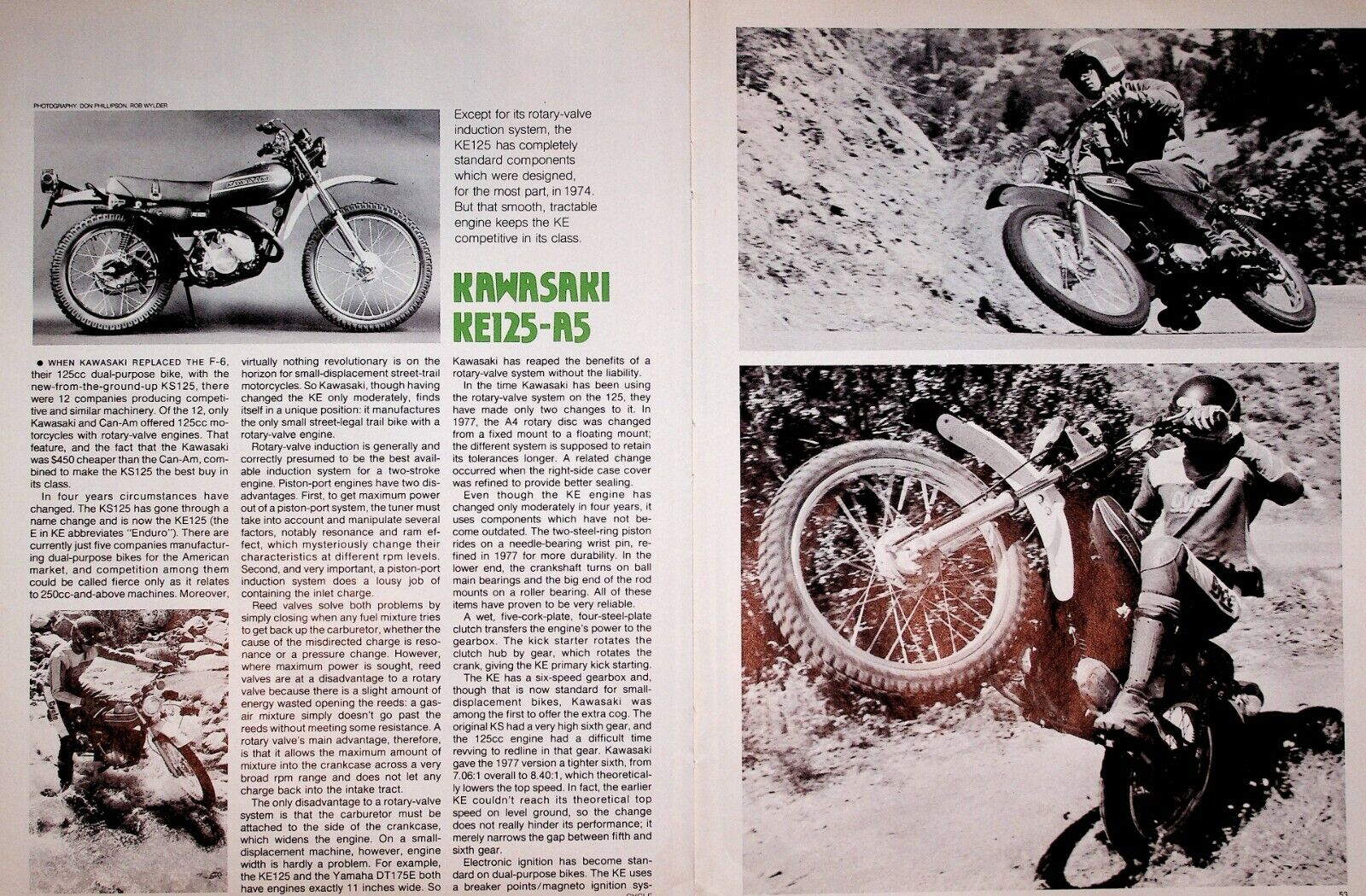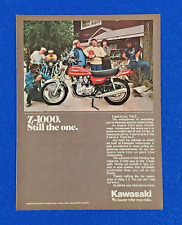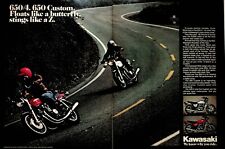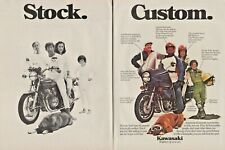When you click on links to various merchants on this site and make a purchase, this can result in this site earning a commission. Affiliate programs and affiliations include, but are not limited to, the eBay Partner Network.
Yes we combine shipping for multiple purchases.Add multiple items to your cart and the combined shipping total will automatically be calculated.
1978 Kawasaki KE125-A5 - 5-Page Vintage Motorcycle Road Test Article
Original, vintage magazine articlePage Size: Approx. 8\" x 11\" (21 cm x 28 cm) each pageCondition: Good
WHEN KAWASAKI REPLACED THE F-6,their 125cc dual-purpose bike, with thenew-from-the-ground-up KS125, therewere 12 companies producing competi-tive and similar machinery. Of the 12, onlyKawasaki and Can-Am offered 125cc mo-torcycles with rotary-valve engines. Thatfeature, and the fact that the Kawasakiwas S450 cheaper than the Can-Am, com-bined to make the KS125 the best buy inits class.In four years circumstances havechanged. The KS125 has gone through aname change and is now the KE125 (theE in KE abbreviates “Enduro\"). There arecurrently just five companies manufactur-ing dual-purpose bikes for the Americanmarket, and competition among themcould be called fierce only as it relatesto 250cc-and-above machines. Moreover,virtually nothing revolutionary is on thehorizon for small-displacement street-trailmotorcycles. So Kawasaki, though havingchanged the KE only moderately, findsitself in a unique position: it manufacturesthe only small street-legal trail bike with arotary-valve engine.Rotary-valve induction is generally andcorrectly presumed to be the best avail-able induction system for a two-strokeengine. Piston-port engines have two dis-advantages. First, to get maximum powerout of a piston-port system, the tuner musttake into account and manipulate severalfactors, notably resonance and ram ef-fect, which mysteriously change theircharacteristics at different rpm levels.Second, and very important, a piston-portinduction system does a lousy job ofcontaining the inlet charge.Reed valves solve both problems bysimply closing when any fuel mixture triesto get back up the carburetor, whether thecause of the misdirected charge is reso-nance or a pressure change. However,where maximum power is sought, reedvalves are at a disadvantage to a rotaryvalve because there is a slight amount ofenergy wasted opening the reeds: a gas-air mixture simply doesn’t go past thereeds without meeting some resistance. Arotary valve\'s main advantage, therefore,is that it allows the maximum amount ofmixture into the crankcase across a verybroad rpm range and does not let anycharge back into the intake tract.The only disadvantage to a rotary-valvesystem is that the carburetor must beattached to the side of the crankcase,which widens the engine. On a small-displacement machine, however, enginewidth is hardly a problem. For example,the KE125 and the Yamaha DT175E bothhave engines exactly 11 inches wide. SoExcept for its rotary-valveinduction system, theKE125 has completelystandard componentswhich were designed,for the most part, in 1974.But that smooth, tractableengine keeps the KEcompetitive in its class.KRHR5RKIKE125-R5Kawasaki has reaped the benefits of arotary-valve system without the liability.In the time Kawasaki has been usingthe rotary-valve system on the 125, theyhave made only two changes to it. In1977, the A4 rotary disc was changedfrom a fixed mount to a floating mount;the different system is supposed to retainits tolerances longer. A related changeoccurred when the right-side case coverwas refined to provide better sealing.Even though the KE engine haschanged only moderately in four years, ituses components which have not be-come outdated. The two-steel-ring pistonrides on a needle-bearing wrist pin, re-fined in 1977 for more durability. In thelower end, the crankshaft turns on ballmain bearings and the big end of the rodmounts on a roller bearing. All of theseitems have proven to be very reliable.A wet, five-cork-plate, four-steel-plateclutch transfers the engine\'s power to thegearbox. The kick starter rotates theclutch hub by gear, which rotates thecrank, giving the KE primary kick starting.The KE has a six-speed gearbox and,though that is now standard for small-displacement bikes, Kawasaki wasamong the first to offer the extra cog. Theoriginal KS had a very high sixth gear, andthe 125cc engine had a difficult timerevving to redline in that gear. Kawasakigave the 1977 version a tighter sixth, from7.06:1 overall to 8.40:1, which theoretical-ly lowers the top speed. In fact, the earlierKE couldn\'t reach its theoretical topspeed on level ground, so the changedoes not really hinder its performance; itmerely narrows the gap between fifth andsixth gear.Electronic ignition has become stan-dard on dual-purpose bikes. The KE usesa breaker points/magneto ignition sys-...13398-AL-7810-04






